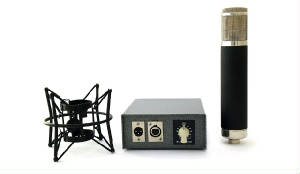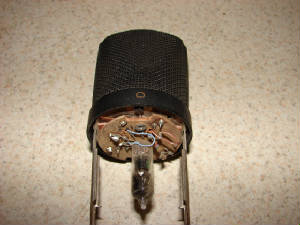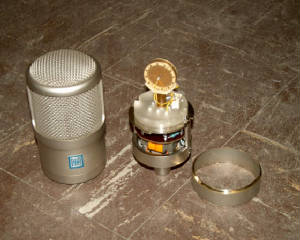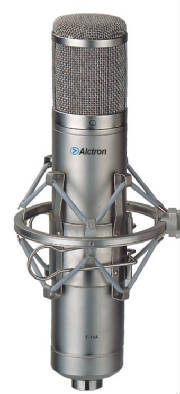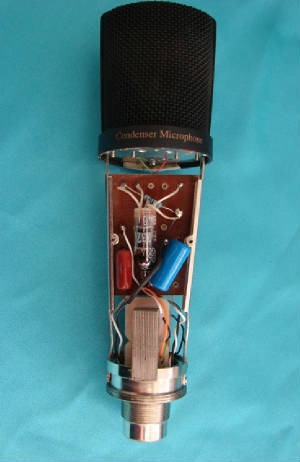Chinese Mic Mods and Hot Rods
Modifying or “hot rodding” products is a cultural phenomenon of many industries and hobbies. You see this in cars, motorcycles and in musical equipment. The Marshall JMP guitar amplifier head has long been used as the basis for countless modifications and experiments. The irony is that Jim Marshall hot rodded the Fender Bassman to create the Bluesbreaker that later became the JMP platform, and the Bassman was a hot rod of earlier RCA and Western Electric amps! Mesa Boogie also started by hot rodding Fender guitar amplifiers before they started to make their own units. Hot rodding exists in microphones as well. For two decades, folks have been buying Chinese microphones and modifying them to suit their own needs and a huge part of today’s microphone market is based on the results of this work.
There is a perception that Chinese microphones are substandard. We believe that this is a misinformed and overly simplified point of view. In the 1950’s, China and East Germany developed an exchange program to observe best practices and share technology. One area that the Chinese observed was the production of microphone capsules. A handful of Chinese engineers spent months at the Neumann factory working with the East German employees tooling back plates, making and attaching diaphragms and testing capsules. When these engineers went home, their knowledge became the foundation for all microphone production that exists in China and Taiwan today. Some of those engineers are still living and designing capsules in China! As a result, there are many Chinese capsules that are on par with capsules made in the West.
There certainly are some bad microphones made in China, but that’s true for the US and Europe as well. A good portion of the dissatisfaction with the Chinese microphones is due to the differences in audiences and their tastes. While in the US, a 12AX7 is not considered a good tube for a microphone, in China they are plentiful and affordable to the average citizen who might not be able to afford a NOS EF86. Sometimes the circuits are optimized for mass production and certain trade-offs are made. In other cases, Chinese microphone design is driven by the specs shown on paper. Low self noise and off axis rejection are important specs in China. They are important in the US, but not at the detriment of sonic quality. It is these types of design decisions that have contributed to the idea that Chinese mics are of questionable quality. It is not the quality that’s in question it’s the priority of trade-offs in the production process that are not aligned with the tastes and needs with the Western market.
If you do some research on the web, you will find that there are a number of different Chinese companies that offer products with a similar technical spec and outward appearance. This is part of their culture that is very
different from Western cultures. We have to remember that China is still a communist country and within China it is appropriate for companies to share designs with each other as all designs made in China are owned by the people. There are a number of manufacturers, making quality products out there; Alctron, Music Yang, Shaui Yin to name a few. Perhaps the most recognized of these is Alctron whose HST-11a (T-11a for short) has been used as the basis for more manufacturer’s product lines and hot rod projects than any other due to their high level of consistency and tight quality control. For the price, their T-11a microphone is a great value straight out of the box.
Oliver has modified and custom built microphones since he came to Seattle nearly 20 years ago. Since he started his own company in the mid 1990's he has built historically correct looking and sounding Neumann and AKG type of mics all the way to historic rebuilds and Chinese mic mod’s. The early mics that were modified were the SE, Marshall and PPA mics, all designed in the direction of a U87. Unfortunately, in those cases, the electronics, layout and especially the transformer were not doing justice to the capsule at all!
Those early mod’s were “quick and dirty” rebuilds designed around the BV8 and T14 style transformers. Although they were roughly built, the end product showcased the ability of the capsule and many of those mics were built to be used in professional studios in the greater Seattle area. It’s unclear how many different versions were built in total due to the custom nature of those mics, but the most popular version was built around the NOS EF732 in conjunction with a low profile BV8 type transformer that was developed by Oliver to fit in those slim Chinese mic bodies. It was never designed to be anything close to a U47, but a bunch of customers referred to that configuration as “the 47 one”, and that’s how people ordered the mic from Oliver.
After trying a bunch of different Chinese manufacturers’ products, Oliver found that the capsules and metalwork from Alctron had the best quality control so they became the “go to” choice for mic mod’s. It helped that they were so easy to get here in the US as many companies were actively importing them and re-badging them with their own corporate logos. The most popular style is the Alctron T-11a which is also available through a few other Chinese companies. Over time, the Alctron T-11a has become the Marshall JMP for microphone mod’s!
The microphone mod’s were never conceived as a potential TAB Funkenwerk product, but within a few years, several microphone manufacturers knocked on Oliver’s door to get the transformer used for those mics as an OEM part. When Telefunken USA (now Telefunken Elektroakustik) launched their RFT line of mics with their M16, they had some public perception challenges with the M16. Telefunken’s business manager at the time, Joe Sanborn, approached AMI to upgrade their RFT line with Oliver’s “47 style” mic mod.
Oliver offered them the 47 style and a C12 inspired version that he had recently designed. Telefunken picked up both mic designs under the condition that they would be provided exclusively to them for as long as they purchased transformers from AMI. The 47 style mod became the RFT AK47 and the C12 style mod became the RFT M16 MKII.
Despite the commercial and critical success of these microphones (both mics were nominated for TEC Awards), AMI and Telefunken Elektroakustik mutually decided to move in new directions and the exclusivity agreements were allowed to expire in September, 2009. Due to customer and retailer feedback received during and after the 2009 AES Show, AMI worked with Blackspade Acoustics to launch an updated version of the AK47design, what was introduced as the Blackspade UM17 and sold till March 2014 under the Blackspade name, since April 2014 the UM17(R) is now made nearly entirely in here in the USA and sold as Tab-Funkenwerk mic.
Also Read:

